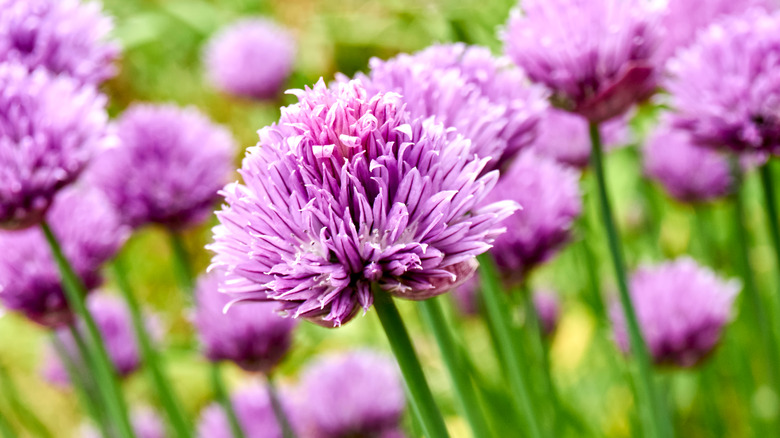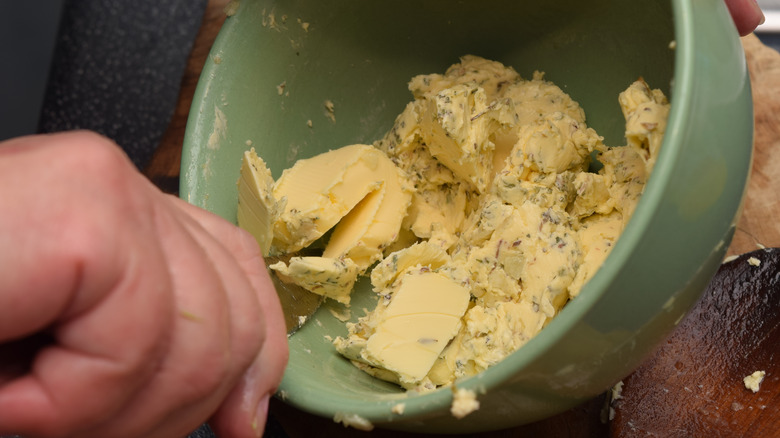The Best Way To Incorporate Chive Blossoms Into Compound Butter
Compound butter is perfect for pairing with just about any savory meal as it brings together butter and any other ingredients, merging them into one flavor-packed log. Aside from merely enhancing the taste of your meals, compound butter can be visually appealing — which is why you should think about adding chive blossoms, provided they are in season.
If you've ever grown chives or have seen them at a farmers markets, you've seen the beautiful, purple hued flowers that blossom on the end of the sprigs. These colorful buds arrive at the tail end of springtime when they shoot forth from the end of the chive stalk. As a member of the Allium family, chives have a very mild oniony flavor and aroma with the blossoms being just as tasty as the stalks.
Chive blossoms are best to chop and incorporate into your compound butter when they are bright and bold in color. Not only will this ensure a wonderful vibrancy to your spread, but the aromatics will be strong and present at this point. Waiting until the flowers are waxy and past bloom will mean a loss of color, texture, and flavor to your butter.
Choose bright blooms to ensure vibrancy and flavor
The key to achieving a nicely incorporated compound butter is to make sure that the butter is at room temperature. If you begin with it cold, you could potentially bruise the chives. Room temperature butter is far more malleable and cooperative anyway.
One of the easiest ways to make compound butter is to blitz everything together in a food processor; however, when you are working with chive blossoms, it is better to mix the butter by hand to avoid cutting up the flowers too much and losing their vibrancy. Once the chive blossoms are chopped to your liking, add them in until they are fully mixed into the butter.
You'll then scrape this fused butter onto a piece of plastic wrap and roll it into a log. Make sure the butter is sealed completely within the plastic wrap before putting it in the fridge, and then once done, it will re-solidify and build in flavor as it chills. What you'll end up with is a compound butter with purple and green flecks laced throughout it. Compound butter should be able to keep for up to a month in the fridge and three months in the freezer.

